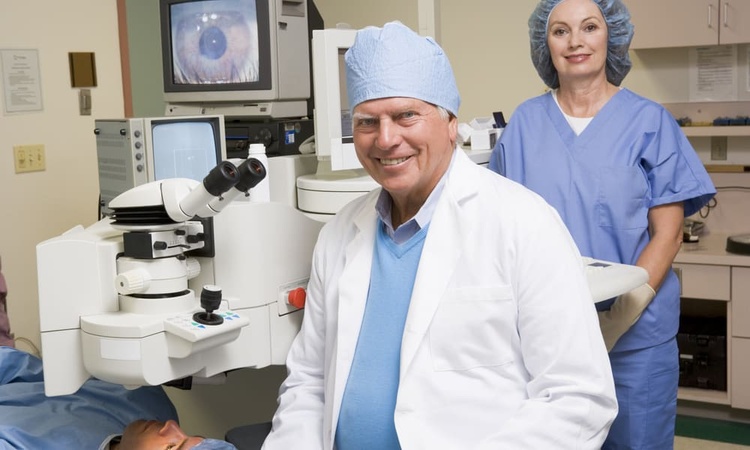Breast Cancer Treatment Today: What You Need to Know to Make Informed Choices
A diagnosis of breast cancer can feel sudden and overwhelming, bringing a flood of new terms, tests, and decisions. This overview explains the main treatment approaches used today, how doctors tailor them to your specific diagnosis, and the kinds of expert guidance and emotional support that can help you make informed, confident choices along the way.

Breast cancer care has changed significantly in recent years, and many people diagnosed today have more options and better information than ever before. Alongside medical advances, there is a stronger focus on tailoring treatment to the individual, considering not just the tumor but also a person’s overall health, values, and daily life. Understanding the main types of treatments, how they are combined, and why your plan may differ from someone else’s can help you feel more prepared for the decisions ahead.
This article is for informational purposes only and should not be considered medical advice. Please consult a qualified healthcare professional for personalized guidance and treatment.
Treatment options: surgery, chemo, radiation
Most treatment plans include some form of surgery to remove as much of the cancer as possible. This may be a lumpectomy, which removes only the tumor and a small margin of surrounding tissue, or a mastectomy, which removes the entire breast. Lymph nodes under the arm are often checked or removed to see whether cancer has spread. Reconstruction of the breast, using implants or your own tissue, can be done at the same time as mastectomy or later, and is a separate decision from cancer control.
Medicines are used to treat cancer cells that may have spread beyond the breast. Chemotherapy uses drugs that travel through the bloodstream and can be given before surgery to shrink a tumor or after surgery to lower the risk of recurrence. Hormone therapy blocks or lowers estrogen or progesterone in cancers that depend on these hormones. Targeted therapies focus on specific features of the cancer cells, such as HER2, while immunotherapy can help the immune system recognize and attack certain tumor types.
Radiation therapy uses high-energy beams to treat the breast, chest wall, or nearby lymph node areas. It is commonly recommended after a lumpectomy and sometimes after mastectomy, especially when cancer has involved lymph nodes or larger tumors. Modern radiation techniques are designed to limit exposure to nearby organs, and treatment is usually given over several weeks in short daily sessions. Together, surgery, medicines, and radiation are combined in different ways to reduce the risk that cancer will come back and to treat any cancer that has spread.
How your diagnosis shapes your plan
Even when two people have the same general diagnosis, their treatment plans may look different. Doctors consider the stage of the cancer, which reflects the size of the tumor and whether it has spread to lymph nodes or other organs. They also look at tumor grade, hormone receptor status, and whether the cancer is HER2-positive or triple-negative. In some situations, specialized genomic tests on the tumor can help estimate the benefit of chemotherapy versus hormone therapy alone.
Personal factors are equally important. Age, other medical conditions, family history, pregnancy, fertility considerations, and whether someone is pre- or post-menopausal can all influence choices about surgery and medicines. A plan also needs to account for practical realities such as distance from the treatment center, work and family responsibilities, and support at home. Side effects that one person can manage may be too disruptive for another, and adjustments can often be made over time as treatment progresses and new information becomes available.
Getting expert guidance and support
Because treatment is complex, most people are cared for by a team rather than a single clinician. This team can include a breast surgeon, medical oncologist, radiation oncologist, radiologist, pathologist, oncology nurses, and often a patient navigator or social worker. Many centers discuss cases in multidisciplinary meetings so that different specialists can weigh in on the recommended plan. Getting a second opinion, especially at a comprehensive cancer center, can provide confirmation of a proposed approach or introduce additional options, such as clinical trials.
Support goes beyond medical decisions. Counseling, support groups, and peer-to-peer programs can help people process emotions and fears. Rehabilitation services may address physical effects such as fatigue, arm stiffness, or changes in strength and balance. Nutrition guidance, financial counseling, and assistance with transportation or childcare can reduce some of the practical burdens of treatment. Family members and close friends can play a vital role, but it is also reasonable to set boundaries and ask for the kind of support that feels most helpful. Symptom management and palliative care, which focus on quality of life, can be part of care at any stage.
As treatment for breast cancer continues to evolve, the core goals remain consistent: controlling the disease, reducing the chance of it returning, and preserving or improving quality of life. Understanding the range of options, recognizing that your plan is shaped by your specific diagnosis and circumstances, and leaning on medical and personal support can make a difficult period more structured and less overwhelming. While no single path suits everyone, thoughtful, informed choices made together with your care team can guide you through each step of treatment today.




